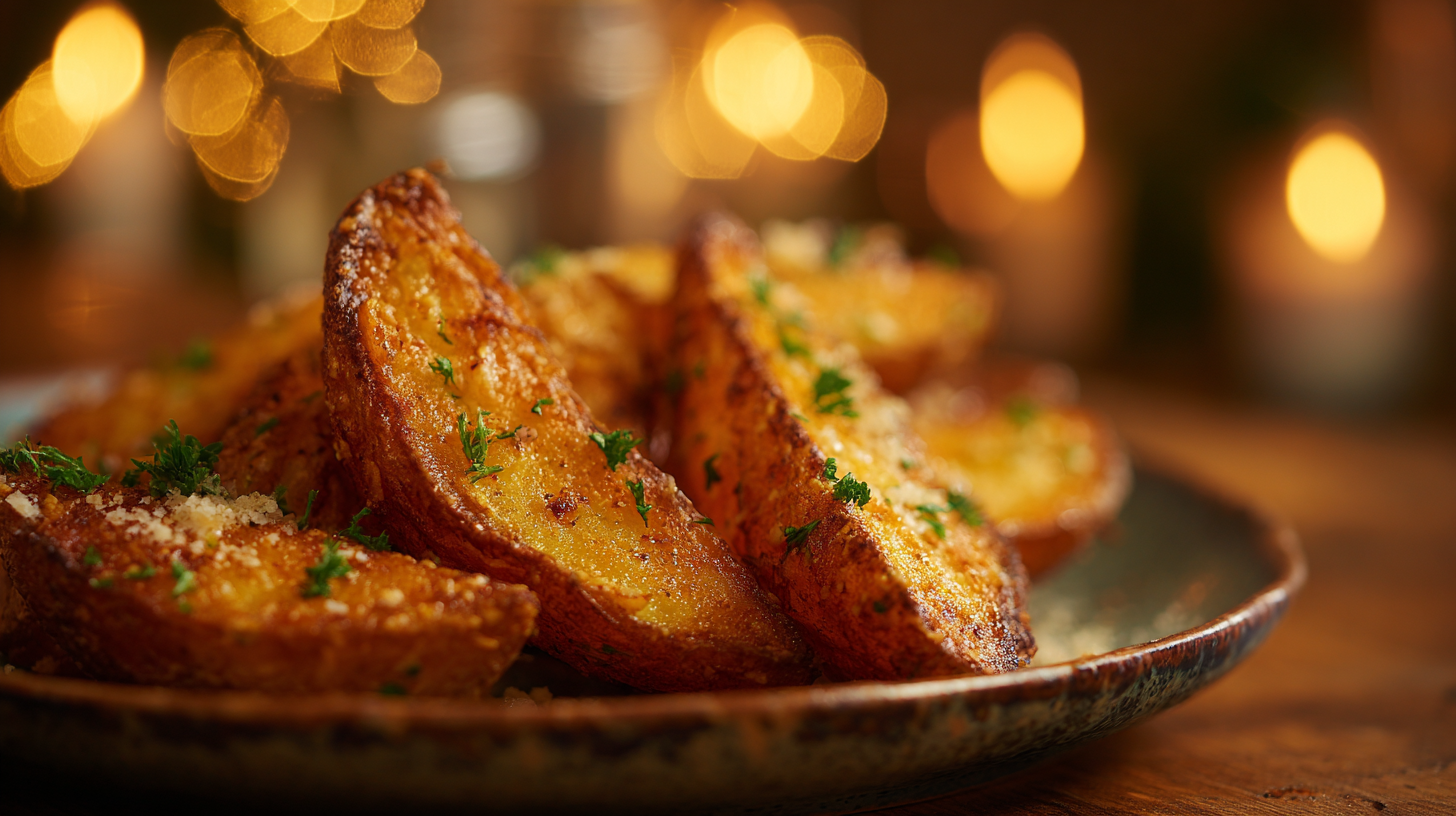Stuffed olives are more than just a garnish on your martini or a side on your cheese platter; they are a testament to the rich culinary traditions that span across various cultures and cuisines. This comprehensive guide delves into the world of stuffed olives, offering insights into their types, culinary uses, health benefits, and much more.
Introduction to Stuffed Olives
More than just an appetizer or garnish, stuffed olives represent a culinary treasure, boasting a rich history that stretches back to ancient times. Early civilizations held these flavorful gems in high esteem, not only for their delightful taste but also for their nutritional benefits. The Mediterranean gave birth to the tradition of stuffing olives, a culinary practice that showcases the region’s plentiful produce and vibrant flavors.
Mediterranean Delicacy with Global Appeal
In Mediterranean cuisine, stuffed olives are more than just a dish; they are a symbol of hospitality and festivity. Often served as part of a mezze platter or as an accompaniment to cocktails, these savory bites add a burst of flavor and sophistication to any gathering.
The global appeal of stuffed olives lies in their unique ability to blend tradition with innovation. Chefs and home cooks alike enjoy experimenting with different fillings and olive varieties, creating an endless array of flavor combinations that cater to diverse palates.
Types of Stuffed Olives
Stuffed olives bring a culinary adventure to the table, catering to a wide array of tastes with their diverse flavors and textures. The base olive variety is key, as each has its unique profile. As for the stuffings, the options are nearly limitless, each adding its own twist.
- Pimento : transforms olives with its vibrant, sweet red peppers, infusing a subtly sweet and tangy flavor that’s universally loved.
- Blue Cheese: lovers find a heavenly match in olives stuffed with this bold, savory cheese. The creamy, sharp taste of blue cheese beautifully complements the olive’s natural brininess.
- Almond: provide a delightful crunch, offering a nutty, slightly sweet flavor that contrasts nicely with the soft texture and rich taste of the olives.
- Garlic: often choose olives stuffed with pungent, aromatic cloves, delivering a robust flavor that elevates any appetizer spread or cocktail.
For a more in-depth look at the different types of olives and their specific uses in dishes, check out this comprehensive guide from Webstaurant Store.
Culinary Uses of Stuffed Olives
Stuffed olives, a culinary delight known for their rich and savory taste, offer a versatile ingredient that can elevate the flavor profiles of numerous dishes and cocktails. The practice of stuffing olives is not just a testament to culinary creativity but also to the cultural richness of the regions where these practices originated. Here’s an exploration of how stuffed olives can be used in various culinary settings:
1. Martini Garnishes
Stuffed olives are perhaps most iconic as a garnish in a classic martini. The salty and briny flavors of the olive perfectly complement the dryness of the martini, creating a balanced and sophisticated drink. Whether it’s a traditional gin martini or a more modern vodka variant, a skewer of stuffed olives adds both visual appeal and a depth of flavor. Popular stuffings for martini olives include blue cheese, almonds, or pimentos, each adding its unique twist to the cocktail.
2. Mediterranean Salads
The Mediterranean diet, renowned for its health benefits, often features olives as a staple ingredient. Stuffed olives, with their burst of flavors, can add a new dimension to these salads. Imagine a Greek salad where the salty feta cheese and the crisp cucumbers meet the rich, savory taste of olives stuffed with garlic or herbs. Not only do these olives add a punch of flavor, but they also make the salad more visually appealing and texturally varied.
3. Tapas and Appetizers
Stuffed olives not only shine as stars in the realm of small plates and appetizers but also hold a special place in Spanish cuisine. Specifically, chefs often present olives as a key component of a tapas spread. The variety of these flavorful morsels is truly endless. For instance, you might encounter olives stuffed with anchovies or jalapeños, offering a bold taste, or perhaps filled with cheese or sundried tomatoes for a milder yet still flavorful experience. Moreover, these little flavor bombs can be served on their own, skewered with small bits of cheese and cured meats, or even baked into a crusty bread. Consequently, this creates a range of appetizers that are not only delightful to look at but also a joy to eat.
Pairings and Variations
Stuffed olives offer endless culinary possibilities beyond their traditional uses, limited only by the chef’s imagination. Slicing and adding them to pizzas or flatbreads, mixing into pasta for a Mediterranean twist, or chopping to stuff meats, they offer a surprise burst of flavor in every bite.
When selecting stuffed olives, it’s crucial to consider the dish’s flavor profile and the stuffing that best complements it. The olive’s saltiness can counterbalance sweetness or amplify spiciness, while the stuffing contributes an extra dimension of taste and texture.
For those interested in exploring more about Mediterranean flavors, consider reading about the timeless delight of stuffed artichokes.
Health Benefits and Nutritional Value
Stuffed olives are more than a tasty addition to your meals; they’re a powerhouse of nutrition and health benefits. These delightful morsels are particularly renowned for their rich content of essential nutrients, making them a beneficial choice for a balanced diet. Here’s a deeper dive into the health benefits and nutritional value that stuffed olives offer:
Rich in Vitamin E: Stuffed olives are an excellent source of Vitamin E, a potent antioxidant that plays a crucial role in maintaining skin health and supporting the immune system. Vitamin E also aids in protecting cells from oxidative stress caused by free radicals, potentially reducing the risk of chronic diseases such as heart disease and cancer.
Packed with Healthy Fats: Olives are known for their high content of monounsaturated fats, primarily oleic acid. These healthy fats are beneficial for heart health, helping to regulate cholesterol levels and reduce the risk of heart disease. The fat content in olives not only provides a satiety factor, making you feel full for longer but also aids in the absorption of fat-soluble vitamins.
Abundant in Antioxidants: Stuffed olives, abundant in antioxidants, serve as a rich source of compounds like oleuropein, hydroxytyrosol, and tyrosol. These antioxidants play a crucial role in shielding your cells from damage. When you regularly include antioxidant-rich foods in your diet, you may experience reduced inflammation, a lower risk of chronic diseases, and a healthier aging process.
Besides their primary nutrients, stuffed olives also bring a variety of vitamins and minerals to the table, including iron, copper, and fiber. Their versatility shines as you can enjoy them in salads, pizzas, or even as a standalone snack. However, it’s important to remember that despite their health benefits, stuffed olives are also high in sodium. If you’re keeping an eye on your salt intake, you should consider consuming them in moderation.
These components contribute to heart health, reduce inflammation, and provide numerous other health benefits.
Selecting the Best Stuffed Olives
Choosing the right stuffed olives can significantly enhance the flavors and overall appeal of your culinary creations. Whether you’re garnishing a martini, adding a zesty touch to salads, or incorporating them into sophisticated appetizers, the selection of stuffed olives you make can be a pivotal decision. Here are some key factors to consider ensuring you select the best-stuffed olives that will elevate your dishes:
Brand Reputation:
The brand of stuffed olives can be a reliable indicator of quality. Brands that have stood the test of time and have consistently received positive feedback from consumers and culinary professionals are often your safest bet. They are more likely to adhere to high-quality standards in sourcing, production, and packaging. Researching and reading reviews can provide insights into the brand’s reputation and the satisfaction level of its customers.
Type of Olive Used:
The variety of olive is a cornerstone in determining the flavor profile and texture of the final product. Common varieties include Manzanilla, Kalamata, and Gordal, each offering unique tastes and textures. Manzanilla olives are known for their crisp texture and slightly nutty flavor, making them a popular choice for stuffing. Kalamata olives, with their deep purple color and rich, fruity flavor, provide a more pronounced taste. Gordal olives are larger and meatier, ideal for those who prefer a more substantial bite. Consider the olive variety that best complements the other ingredients in your dish.
Quality of Stuffing:
The stuffing can transform a simple olive into a delightful taste experience. Common stuffings include pimento, garlic, almonds, blue cheese, or jalapeño. The quality of the stuffing should match that of the olive itself. Premium stuffings are typically fresh, flavorful, and skillfully combined with the olive to enhance, not overpower, the olive’s natural taste. The stuffing should be well-balanced, offering a harmonious blend of flavors that accentuates the olive’s character.
Preservation and Packaging:
The way stuffed olives are preserved and packaged can greatly influence their freshness and taste. Olives preserved in oil tend to retain their texture and flavor better than those in brine, which can be overly salty. Glass packaging is preferable to cans, as it doesn’t impart any metallic taste and allows you to assess the condition of the olives before purchase.
Pairing with Your Dish:
Finally, consider how the stuffed olives will complement the other components of your dish. The flavor intensity, texture, and size of the olives should harmonize with the overall culinary creation. Delicate dishes might benefit from smaller, milder olives, while robust, hearty dishes can stand up to larger, more flavorful varieties.
DIY Stuffed Olives: A Guide
Creating your stuffed olives allows for customization and freshness. Here’s a simple guide to get you started:
- Select your olives and stuffing ingredients.
- Carefully remove the pits from the olives if they are not already pitted.
- Stuff each olive with your chosen filling.
- Store them in olive oil or brine to preserve their flavor and freshness.
Pairing Stuffed Olives with Drinks and Dishes
The right pairing can accentuate the flavors of both the olives and the accompanying drink or dish. They go particularly well with:
- Dry martinis
- Wine selections
- Various cheese assortments
Stuffed Olives in World Cuisines
Stuffed olives, a gem of the Mediterranean kitchen, have journeyed far and wide, gracing tables and tantalizing taste buds across the globe. Various cultures have embraced and adapted this culinary treasure, each infusing it with local flavors and ingredients, thus enriching the global tapestry of gastronomy.
In European Cuisine:
Beyond the Mediterranean, stuffed olives make a prominent appearance in many European cuisines. In Spain, they are a staple of tapas, often stuffed with anchovies or cheese and served alongside a myriad of small, flavorful dishes. French cuisine incorporates them into elegant hors d’oeuvres, pairing the salty tang of olives with the subtle sophistication of wines.
In the Americas:
Chefs in the Americas have embraced the versatility of stuffed olives, capturing the culinary imagination. In the United States, bartenders classically garnish cocktails like martinis with them, introducing a burst of flavor to the smooth liquor. In South America, especially in countries such as Brazil and Argentina, cooks frequently incorporate olives into empanadas, enriching the beloved pastries with a savory depth.
In the Middle East and North Africa:
Ingredients like garlic, lemon peel, or harissa often fill olives, mirroring the region’s cuisine’s rich, bold flavors. As a common feature in mezze platters, these stuffed olives enhance the variety of dips, bread, and other small dishes, adding to the overall dining experience.
Preservation and Storage Tips
To ensure that your stuffed olives maintain their optimum taste and texture, consider the following tips for preservation and storage:
Keep Them Submerged: Stuffed olives should be stored in their original brine or oil to prevent them from drying out. Ensure that the olives are fully submerged in the liquid.
Refrigeration: Once opened, it’s best to store the olives in the refrigerator. This slows down any potential spoilage and helps maintain the olives’ freshness.
Avoid Direct Light and Heat: Store your olives in a cool, dark place. Direct sunlight or heat can degrade the quality of the olives and the oil or brine they’re stored in.
Use Clean Utensils: When removing olives from their container, always use clean utensils to prevent contamination.
Check for Signs of Spoilage: Before consuming, check your olives for any off smells, discoloration, or mold. If you notice any of these signs, it’s best to discard the olives.
FAQs about Stuffed Olives
How can I pair stuffed olives with wines?
They pair wonderfully with a variety of wines. For a classic combination, match the salty and robust flavor of the olives with a crisp, dry white wine or a light red wine. The acidity and fruitiness of the wine can balance the saltiness of the olives.
Are stuffed olives healthy?
Olives are a great source of monounsaturated fats, vitamin E, and antioxidants. However, they are also high in sodium, so it’s best to consume them in moderation, especially if you’re watching your salt intake.
Can I use the oil or brine from the olives?
Certainly! You can infuse the oil or brine with the flavors of the olives and stuffing, enhancing its taste. This makes it a flavorful choice for salad dressings, marinades, or bread dips.
How can I incorporate them into my cooking?
They are incredibly versatile. Chop them up and add them to salads, pasta, or pizza for a burst of flavor. You can also include them in your charcuterie boards, or serve them as a simple, flavorful appetizer with cocktails.
Conclusion and Final Thoughts
Stuffed olives are a testament to the rich culinary diversity and creativity found in kitchens around the globe. Whether you’re enjoying them as a snack, garnish, or key ingredient, the world of stuffed olives offers a plethora of flavors and textures to explore and savor.
By understanding the types, benefits, and culinary uses of stuffed olives, you can elevate your dishes and appreciate the depth they bring to your culinary experiences. So, dive into the delightful world of stuffed olives and let your taste buds embark on a flavorful journey!






